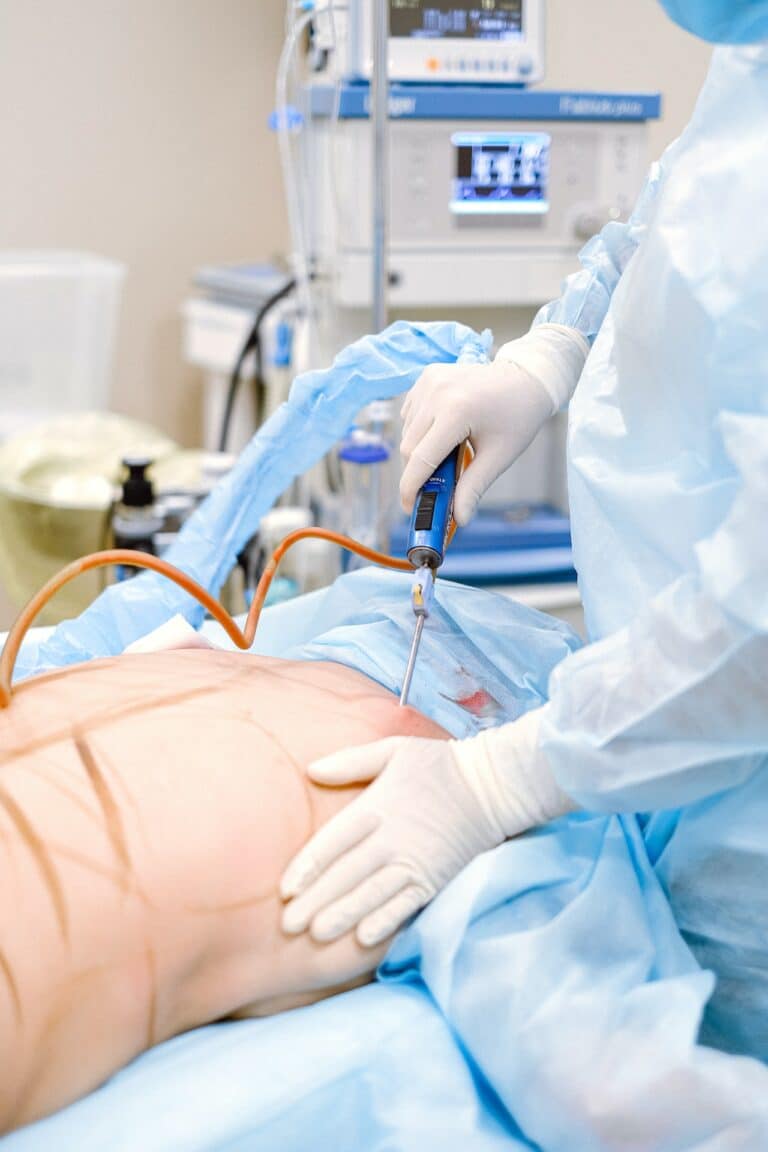Circumferential Body Lift Recovery: Guide, Timeline & Tips
Over 70% of individuals considering body contouring are not fully aware of what circumferential body lift recovery entails. This procedure, while transformative, demands a well-informed recovery strategy to ensure optimal results and minimize complications. Understanding the journey from pre-surgery preparations through the weeks of healing is crucial for anyone looking to redefine their silhouette. Our guide dives deep into the essential steps, tips, and realistic expectations during your recovery period, empowering you with knowledge to navigate this life-changing process confidently.
Key Takeaways
- A circumferential body lift can significantly improve body contour and self-esteem, but it requires a commitment to a careful and sometimes lengthy recovery process.
- Ideal candidates are those at a stable weight, non-smokers, and with realistic expectations about the surgery’s outcomes and recovery timeline.
- Understanding the detailed surgery process helps set realistic expectations and prepares candidates for the post-operative journey.
- The recovery timeline varies, but most individuals can resume light daily activities within 2-4 weeks, with full recovery taking several months. Patience and adherence to medical advice are crucial.
- Managing post-surgery symptoms effectively involves following your surgeon’s guidelines on wound care, pain management, and recognizing signs of complications early.
- Long-term care, including maintaining a stable weight and healthy lifestyle, is essential for preserving the results of your circumferential body lift.
Understanding Circumferential Body Lift
Recovery Timeline
Recovery from a circumferential body lift varies for each person. It generally takes about two to four weeks before you can return to light activities. Full recovery, where you can engage in strenuous activities, might take up to six months.
It’s crucial to follow your surgeon’s advice during this period. They will guide you on how to care for your incisions and manage pain. Listen to your body and don’t rush the healing process.
Pain Management
Pain and discomfort are expected after surgery. Your doctor will prescribe pain medication to help manage it. Over time, the pain will decrease.
It’s important to keep the surgical area clean to prevent infections. If pain increases suddenly or becomes unbearable, contact your surgeon immediately.
Follow-Up Visits
Regular check-ups with your surgeon are part of the recovery process. These visits allow the doctor to monitor your healing and address any concerns.
During these appointments, your surgeon might adjust your medications or recommend changes to your recovery plan based on how you’re healing.
Ideal Candidates for the Procedure
Weight Stability
After understanding what a circumferential body lift entails, it’s crucial to identify who stands to benefit the most from this surgery. Stable weight is a key factor.
Candidates should have maintained their current weight for at least six months. This stability suggests that the individual has adopted a healthy lifestyle. It also indicates that further significant weight fluctuations are unlikely.
Skin Elasticity
Another important aspect is skin elasticity.
The procedure works best for those whose skin has lost its natural elasticity due to aging or significant weight loss. If the skin can’t bounce back on its own, a circumferential body lift can remove excess skin and tissue, enhancing the body’s contour.
Overall Health
Good health plays a pivotal role in recovery and overall results.
Candidates must be free from medical conditions that could impair healing or increase surgery risks. They should not smoke, as smoking can slow down the healing process and lead to complications.
Detailed Surgery Process
Pre-Op Preparation
Patients must undergo thorough health evaluations before the surgery. They discuss their medical history, current medications, and any allergies with the surgeon.
They are advised to stop smoking and avoid certain medications that can increase bleeding risk. This preparation phase is crucial for a smooth surgery and recovery process.

Surgery Day
The circumferential body lift is a complex procedure. It usually takes four to eight hours under general anesthesia.
Surgeons make incisions around the lower torso to remove excess skin and fat. They then tighten the remaining skin for a more contoured appearance. The precise technique varies based on individual needs and goals discussed prior.
Immediate Recovery
After the surgery, patients spend time in a recovery room under close monitoring. Pain management is a priority, with medications provided to ease discomfort.
Drains may be placed at incision sites to remove excess fluid, reducing swelling and speeding up healing. Patients wear compression garments to support the new contours of their body.
Long-Term Care
The full recovery from a circumferential body lift can take several weeks to months. Patients must follow strict guidelines regarding activity levels, wound care, and follow-up visits.
They should gradually resume light activities but avoid strenuous exercise until cleared by the surgeon. Proper nutrition and hydration are key for effective healing.
Recovery Timeline and Expectations
Initial Weeks
The first few weeks after a circumferential body lift are critical. Patients often experience swelling and discomfort. Pain management is essential during this period.
Doctors usually recommend taking it easy. Most people need to take at least two to three weeks off work. They should avoid strenuous activities to ensure proper healing.
Follow-Up Care
Regular check-ups are vital in the recovery process. These appointments help monitor healing and address any concerns promptly.
Surgeons often remove stitches within two weeks post-surgery. They might also adjust compression garments that aid in reducing swelling.
Long-Term Healing
Complete recovery from a circumferential body lift can take up to a year. The body gradually adapts, and scars start to fade.
Patients notice significant improvements in their body contour around the six-month mark. However, it’s important to maintain a stable weight to preserve results.
Managing Post-Surgery Symptoms
Pain Management
After a circumferential body lift, managing pain is crucial. Patients often experience discomfort, especially in the first week.
Doctors usually prescribe pain medication. It’s important to follow their instructions closely. Over time, the need for medication decreases as healing progresses.
Swelling Control
Swelling is a common post-surgery symptom. To reduce it, wearing a compression garment is advised. These garments support the healing process and help shape the body.
Patients should also limit movement in the early stages of recovery. This helps minimize swelling and supports faster healing.
Drain Care
Drains are often placed to remove excess fluid from the surgery site. Proper care of these drains is essential to prevent infection and ensure they function correctly.
Patients receive instructions on how to empty and measure the fluid. Reporting any changes to the surgeon promptly is important for monitoring recovery progress.
Activity Levels
Gradually increasing activity levels aids in recovery. However, patients must avoid strenuous activities or lifting heavy objects for several weeks.
Light walks can promote blood circulation and reduce the risk of blood clots. Always consult with the healthcare provider before increasing physical activity.
Tips for Smooth Recovery
Follow Up
After managing post-surgery symptoms, it’s crucial to keep up with follow-up appointments. These check-ins allow your surgeon to monitor healing and address any concerns promptly.
Doctors will give specific advice tailored to your recovery. They might adjust medications or suggest gentle activities to promote healing. Skipping these appointments can delay recovery, so mark them on your calendar.
Diet and Hydration
Eating right and staying hydrated are key for a smooth recovery. Focus on nutrient-rich foods that aid in healing, like fruits, vegetables, and lean proteins. Avoid processed foods high in sugar and fat as they can hinder the healing process.
Drinking plenty of water helps flush out toxins and keeps the skin healthy. Aim for at least eight glasses a day. This simple step can significantly impact how quickly you recover.
Gentle Movement
While rest is important, incorporating gentle movement into your routine can prevent complications like blood clots. Start with short walks around your home.
Increase these walks gradually but listen to your body. If you feel pain or discomfort, take it as a sign to slow down. These movements improve circulation which is vital for healing.
Resuming Daily Activities Safely
Light Movement
After a circumferential body lift, light movement is crucial. It might seem counterintuitive, but walking can actually aid your recovery. Start with short, gentle walks around your home.
This activity boosts blood circulation, reducing the risk of blood clots. However, avoid strenuous activities or lifting heavy objects for at least six weeks.
Hydration and Nutrition
Proper hydration and nutrition are non-negotiables during recovery. Drink plenty of water to stay hydrated. Your body needs fluids to heal efficiently.
Eat balanced meals rich in vitamins and proteins. These nutrients are essential for repairing tissues and reducing swelling. Avoid processed foods and those high in sugar.
Follow-up Visits
Never skip follow-up appointments with your surgeon. They will monitor your healing process and address any concerns you might have. During these visits, your surgeon can also advise when it’s safe to resume more intensive activities or return to work.
Listen closely to their guidance and ask questions if you’re unsure about any part of your recovery plan.
Long-Term Care and Results
Scar Management
After a circumferential body lift, scar management is crucial. It ensures scars heal well and become less noticeable.
Patients should apply silicone sheets or gel. These products hydrate the scar and reduce its visibility. They must avoid direct sunlight on the scars for at least a year. UV rays can darken scars, making them more visible.
Physical Activity
Gradually resuming physical activity is important. It supports recovery and maintains results.
Initially, light walks are recommended to promote circulation. After six weeks, most patients can return to regular exercise. However, they should avoid strenuous activities that strain the surgery area until fully healed.
Diet and Hydration
Maintaining a balanced diet and staying hydrated are key for healing. They also help preserve the surgery’s results.
A diet rich in proteins, vitamins, and minerals supports tissue repair. Drinking plenty of water keeps the skin elastic and helps with swelling reduction. Patients should avoid processed foods and excessive salt intake to prevent bloating.
Final Remarks
Embarking on a circumferential body lift journey is a significant step towards achieving your desired body contour. You’ve learned about the ideal candidates, what the surgery entails, and the comprehensive recovery process. Following the outlined tips for a smooth recovery and understanding long-term care are pivotal for sustaining your results. Remember, patience and adherence to post-surgery instructions play crucial roles in your transformation journey. Your commitment to following through with the recommended practices ensures a safer recovery and more enduring outcomes.
Let this be your guide to navigating the path of recovery with confidence. If you’re considering a circumferential body lift or are in the midst of your recovery, keep these insights close. They’re designed to support your journey every step of the way. Ready to take the next step? Reach out to a qualified professional who can provide personalized advice tailored to your unique situation.
Frequently Asked Questions
What is a circumferential body lift?
A circumferential body lift is a comprehensive surgical procedure designed to remove excess skin and fat from the midsection, improving the overall shape and tone of the body. It’s ideal for individuals with significant weight loss.
Who are ideal candidates for a circumferential body lift?
Ideal candidates are adults with stable weight, good health, and realistic expectations. It’s particularly beneficial for those who have experienced significant weight loss resulting in excess skin around their body.
How long does recovery from a circumferential body lift take?
Recovery time varies but generally spans 4-6 weeks. Patients are advised to follow post-operative guidelines closely to ensure a smooth healing process.
What symptoms can I expect after surgery?
Post-surgery, patients may experience swelling, bruising, and discomfort. These symptoms are manageable with prescribed medication and proper care.
Can you provide tips for a smooth recovery?
Ensure rest, stay hydrated, follow dietary recommendations, avoid strenuous activities, and attend all follow-up appointments for optimal recovery.
When can I resume daily activities after surgery?
Patients typically return to light daily activities within 2-3 weeks but should avoid heavy lifting and strenuous exercise until fully cleared by their surgeon.
What does long-term care involve post-circumferential body lift?
Long-term care includes maintaining a stable weight through healthy lifestyle choices, regular moisturizing of the skin, and sun protection to preserve results and enhance healing.






